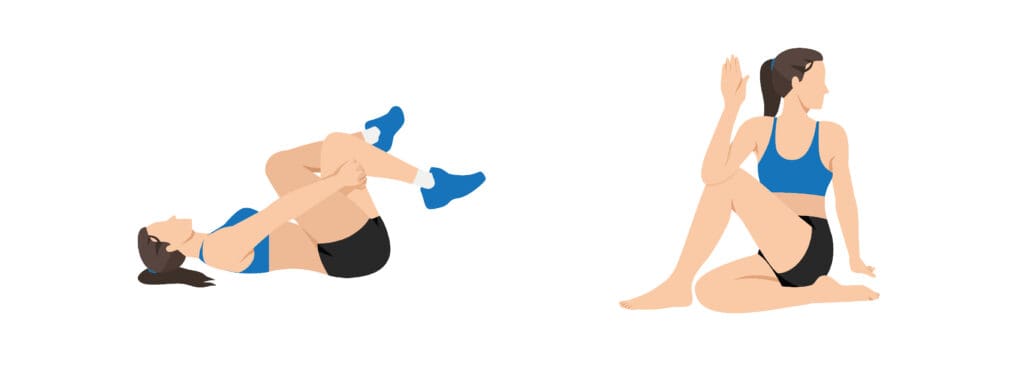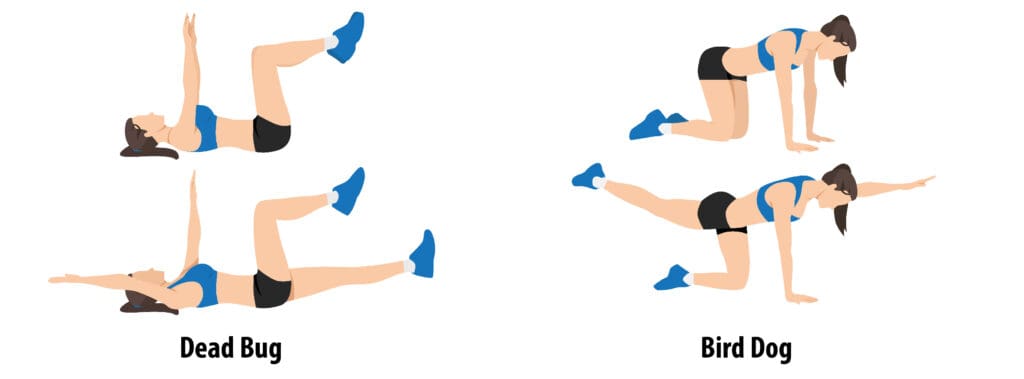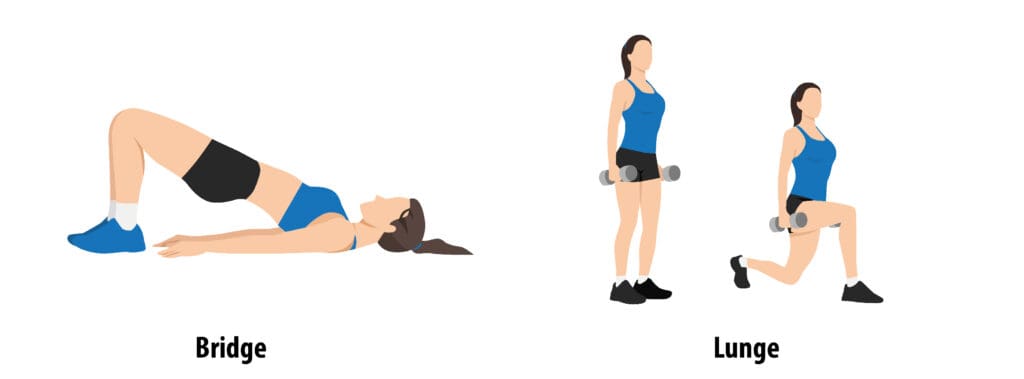Pain in the Butt: Physical Therapists Break Down Piriformis Syndrome vs. Sciatica

Has anyone ever told you “You might want to sit down for this?” Well, you might want to stand up for this post, because that sudden pain in your butt may be from sitting down too much.
Two of the most common causes of low back pain and pain in the buttock are piriformis syndrome and sciatica. The symptoms of piriformis syndrome and sciatica are so similar that they are often mistaken for each other. Both piriformis syndrome and sciatica are conditions that affect sciatic nerve function, but they are caused by two completely different things. Pain in your low back, butt, and radiating down one or both legs might be a sign you’re experiencing piriformis syndrome or sciatica.
What is piriformis syndrome?
As the name implies, piriformis syndrome is caused by the piriformis muscle compressing the sciatic nerve. The piriformis is a small muscle deep to the gluteal muscles and is an external rotator of the hip.

The sciatic nerve passes directly below the piriformis in most people, but for some people, the nerve passes directly through the piriformis, making them more likely to develop piriformis syndrome. This is called primary piriformis syndrome. The other cause is secondary piriformis syndrome, which is when the piriformis muscle compresses the sciatic nerve due to inflammation caused by overuse or trauma. Most often, secondary piriformis syndrome is caused by poor muscle fitness.
Common causes of piriformis syndrome are:
- Weak and/or tight piriformis muscle
- Performing a lot of physical activity such as running or climbing stairs without strengthening or stretching piriformis muscle
- Not warming up or cooling down properly
- Extended periods of sitting
Symptoms of piriformis syndrome:
- Intense pain when sitting or squatting
- Feeling of numbness or “pins and needles” radiating down to the knee
- Pain that worsens with prolonged sitting
- Pain that improves with movement
- Foot numbness
What is sciatica?
Many doctors would refer to any type of sciatic pain as sciatica, which would include piriformis syndrome. However, the most common causes of sciatica are compression or inflammation of a spinal nerve, most commonly due to a herniated disc, spinal stenosis, or degenerative disc disease. This compression causes pain that radiates down the leg similar to that of piriformis syndrome, but the cause of sciatica is in the back while the cause of piriformis syndrome is in the butt.

Symptoms of sciatica:
- Pain, weakness, burning, or tingling down one leg into the foot
- Pain after sitting or standing
- Pain after straining or holding your breath
Treatment for Piriformis Syndrome vs. Sciatica
This means treatment can be very different. Since piriformis syndrome and sciatica are so similar, a physical therapist will perform specific tests to determine the cause of pain. Back pain is complex, and there could be other causes like sacroiliac joint dysfunction. It’s better to see an expert right away, so that they can determine the real cause of pain. If you’re focusing on your piriformis when the actual cause is sciatica, you’re not going to resolve your pain.
Treatment for piriformis syndrome
Treatment for piriformis syndrome involves stretching the piriformis and strengthening the muscles of the hip and trunk. Improving the flexibility of the piriformis will relieve the pressure it places on the sciatic nerve. Strengthening the muscles of the hip and trunk helps improve stability and alignment of the body. This reduces strain on the piriformis and ensures the muscles are working together properly to reduce risk of pain and injury.
Examples of Piriformis Stretches

Examples of Core Strengthening Exercises: Dead Bug and Bird Dog

Examples of Hip Strengthening Exercises: Bridge and Lunge

Treatment for Sciatica:
Since sciatica is caused by an underlying condition in the spine that compresses the sciatic nerve, it’s important to first figure out what the cause is. The exercises and techniques chosen in physical therapy will depend on multiple factors, including the underlying cause, the patient’s pain level, and the patient’s overall conditioning.
Common treatments for sciatica:
- Extension and flexion exercises for the back: Moving the spine through extension (backward) and flexion (forward) movements can help give patients relief.
- Strengthening the muscles of the trunk, low back, hips, and legs: Just like the exercises for piriformis syndrome, strengthening these muscles can help to relieve symptoms. For acute pain, a physical therapist will most likely start with bodyweight isometric holds, like bridges and planks, when the muscles contract without joint movement.
- Nerve glides: Nerves are supposed to glide easily through a nerve tunnel through spaces between your bones. Nerve glides help to guide the nerve through the tunnel.
- Manual therapy: Multiple manual therapy techniques might be used during sciatica treatment, including myofascial release and soft tissue mobilization, joint mobilization, and joint manipulation.
- Dry needling: A qualified physical therapist will insert a monofilament needle into a trigger point in the muscle. This causes the muscle to contract and release, resulting in decreased trigger point activity and pain.
We don’t want anyone to suffer through any kind of pain, especially one that’s a real pain in the butt! If you’re suffering from any kind of low back or butt pain, please give one of our clinics a call or request an appointment here.
